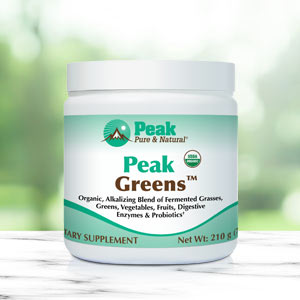Get Easy Health Digest™ in your inbox and don’t miss a thing when you subscribe today. Plus, get the free bonus report, Mother Nature’s Tips, Tricks and Remedies for Cholesterol, Blood Pressure & Blood Sugar as my way of saying welcome to the community!
How the right foods protect against lung infection

“Eat your vegetables” is something we’ve all heard from our parents.
And of all the vegetables out there, cruciferous veggies seem to be the winners as far as offering far-reaching health benefits.
Cruciferous vegetables like broccoli, cauliflower, kale and Brussels sprouts can improve heart health, prevent obesity and boost gut health.
Now, a study has shown how certain molecules in cruciferous vegetables can prevent infectious diseases of the lungs by strengthening the lungs’ natural barriers…
Your lung barrier and why it’s important
Aryl hydrocarbon receptor (AHR) is a protein found at barrier sites like the gut, skin, and lungs.
According to Dr. Andreas Wack of the Francis Crick Institute in London, the action of AHR has been studied extensively in the skin and the gut, but much less so in the lungs.
For instance, in the gut, if the epithelial lining isn’t kept strong, a condition called leaky gut can develop. This can lead to infections as bacteria that should only remain in the gut can escape and wreak havoc in other parts of the body.
The lungs have a similar barrier. It’s only made up of two layers, one of endothelial cells and one of epithelial cells. Even though the layers must allow oxygen to enter, they must also be strong enough to keep pollution, viruses and bacteria out.
And AHR is important to that process. Previous research has shown in the gut when AHR is activated, it signals both your immune cells and the cells lining your intestines to stop all inflammatory processes and repair any cells that were previously damaged.
Dr. Wack and a team of researchers performed studies to see how AHR may protect the lung barriers. In mice infected with flu virus, scientists found blood in the airspaces in the lungs (it had leaked across the damaged lung barrier).
When AHR was overactivated, however, there was less blood in the lung spaces, indicating less damage to the barrier.
On the other hand, when AHR was prevented from being expressed in the lung endothelial cells of infected mice, more blood and immune cells were seen in the air spaces, showing greater damage to the barrier. The mice were also less able to fight off the resulting bacterial infections in addition to the flu virus.
Activating your AHR system for lung protection
According to Dr. Wack, “Until recently, we’ve mainly looked at barrier protection through the lens of immune cells. Now, we’ve shown that AHR is important for maintaining a strong barrier in the lungs through the endothelial cell layer, which is disrupted during infection.”
Not only that, they identified a gut-lung axis linking diet to protection against lung infection via endothelial cells…
In the study some mice were on a control diet and others on a ligand-rich diet. Cruciferous vegetables are among the best sources of plant lignans.
The researchers saw a decrease in protective lung AHR activity in flu-infected mice who were fed a ligan-rich diet before their infection but didn’t eat much food when ill. That means their intake of AHR ligands was reduced as well as the AHR system itself. These mice experienced more lung damage.
Still, these mice had better barrier integrity and less lung damage during infection than mice on the control diet.
This study clearly demonstrated the protection offered by eating cruciferous vegetables. But be sure to follow Dr. Wack’s advice…
“People may be less likely to maintain a good diet when they’re ill, so aren’t taking in the molecules from vegetables which make this system work. It’s a good idea to eat lots of cruciferous vegetables anyway, but this shows it’s even more important to continue eating them when you’re ill!”
Editor’s note: There are perfectly safe and natural ways to decrease your risk of blood clots including the 25-cent vitamin, the nutrient that acts as a natural blood thinner and the powerful herb that helps clear plaque. To discover these and other secrets of long-lived hearts, click here for Hushed Up Natural Heart Cures and Common Misconceptions of Popular Heart Treatments!
Sources:
Molecules in vegetables can help to ease lung infection — Science Daily
Endothelial AHR activity prevents lung barrier disruption in viral infection — Nature
Could a molecule in cruciferous veggies help protect against lung infection? — Medical News Today














